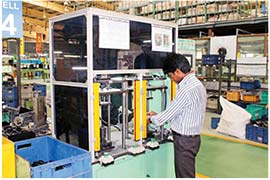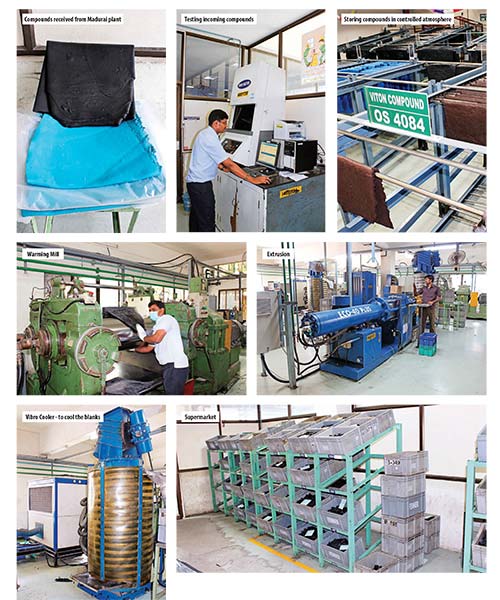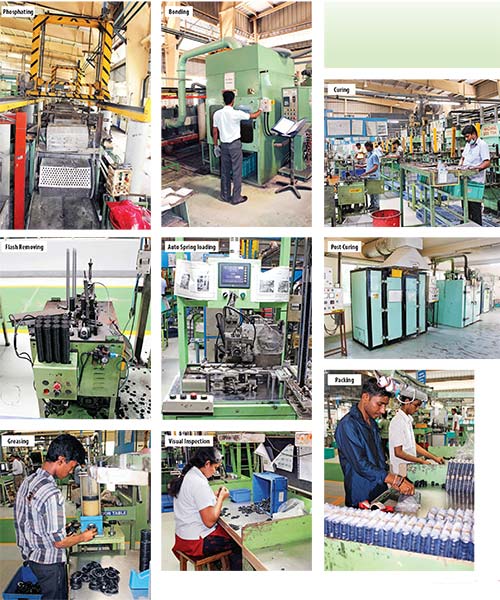Preparation
Materials from the supermarket are taken for curing activity. Prior to this, the shells that the company gets from its Madurai plant, are sent for 7 tank fully automated phospating process. Shell is the core made of steel sheets, and therefore needs phospating to prevent rusting and to maintain quality. As the rubber covers the core it is necessary to ensure that it is rust-free. After the cores are phosphated, they are moved to bonding process where they are dipped in certain special chemicals. This process firms the bonding of rubber to the steel core.
Curing
The bonded shells along with the blanks are moved to the curing press. The company has 59 curing presses ranging from 40 tonne to 250 tonne. Of the total presses 53 are controlled through SCADA (Supervisory Control and Data Acquisition software) to maintain quality. This system monitors all the parameters like temperature, time etc., from the curing machines and maintains it as per the set limits. Any deviation from the stipulated parameters will be brought to the notice of the supervisors through alerts. In a typical curing process, the temperature and time play a vital role to maintain quality of the end product. The company is working on connecting the remaining machines to the SCADA net during this year.
The curing process is carried out based on the size of the end product. It maintains a temperature ranging from 180 to 200 degrees Celsius. The curing oven is loaded with moulds having several cavities if the size of the product is small. By this way the company enhances productivity and yield ratio. More than 85% of the seals manufactured by Fenner encounter post-curing operations, an additional curing process, maintained at about 170 degrees Celsius.
 Low Cost Automation
Low Cost Automation
Trimming
Later, these seals are sent for trimming process where the additional flashes are removed. The company has developed a low-cost automation process where two seals are loaded at a time (against one earlier) for trimming operations. In addition to doubling productivity, the machine also ensures stringent quality. The company also has flash-less or teartrim curing processes, eliminating the flash removing process. About 30% of the total products are made through the flash-less process.
The seals are then sent for visual inspection as they cannot be checked fully if loaded with springs. After the visual inspection the seals are sent to load the springs that are again sourced from Madurai. Over a period of time, Fenner has developed several vendors for supply of few components including springs. The Sriperumbudur plant has about 10 vendors including its parent plant in Madurai.
The company has both manual and automatic processes for loading the springs. Whichever needs lubricants are sent for the particular process, and then sent for packaging and dispatch. Laser marking is done only for the products meant for the aftermarket. It is also done in very few cases where the OEMs insist on their logo or trademark.















One Comment